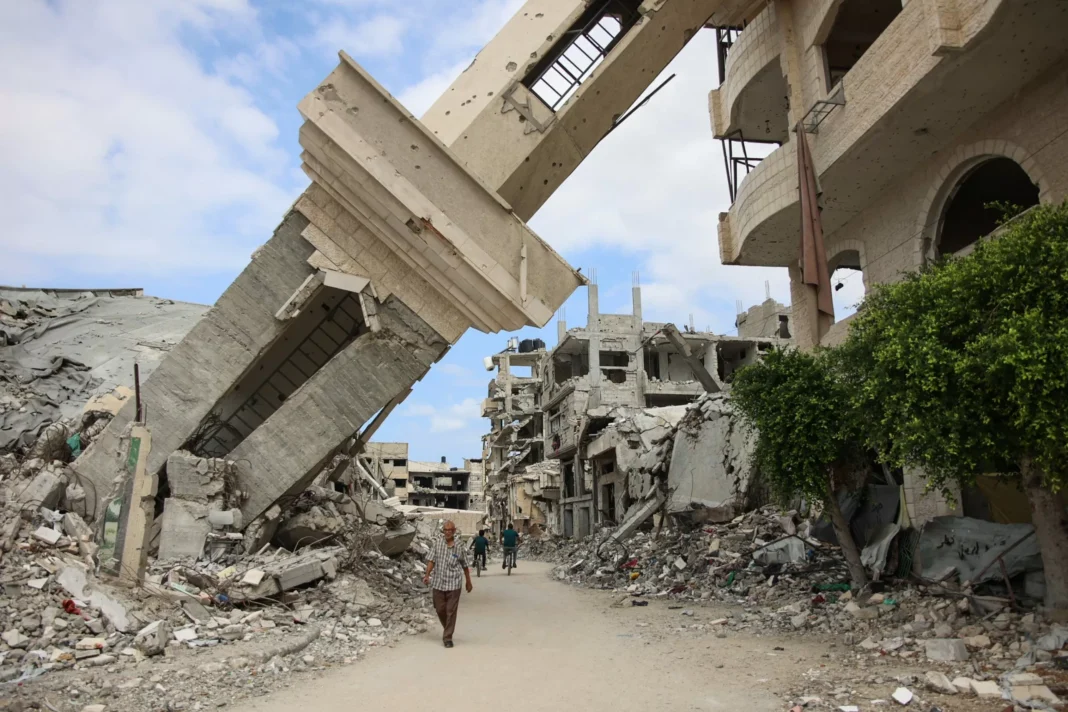In the post-9/11 era, the United States has been involved in numerous conflicts and wars, both overt and covert. However, the American public has been shielded from the true horrors of these wars, thanks to the government’s efforts to control the narrative and manipulate public perception. But author Norman Solomon has shed light on this issue, particularly in the case of the ongoing carnage in Gaza, where the US has played a significant role in perpetuating the violence.
In his book, “War Made Easy: How Presidents and Pundits Keep Spinning Us to Death,” Solomon explains how the US government has worked tirelessly to make the horrors of war invisible to the American people. He argues that the media, which is supposed to be the watchdog of democracy, has become a tool for the government to control the narrative and manipulate public opinion. And nowhere is this more evident than in the case of the ongoing conflict in Gaza.
For years, the people of Gaza have been living under a brutal Israeli blockade, which has resulted in severe shortages of food, medicine, and other basic necessities. The situation has only worsened in recent years, with the Israeli military launching frequent attacks on the besieged territory, resulting in the deaths of thousands of innocent civilians, including women and children. And yet, the American public has been largely unaware of the atrocities being committed in their name.
But thanks to the power of images, the truth about the ongoing carnage in Gaza has been exposed. In the age of social media and instant news, it has become increasingly difficult for the US government to control the narrative and manipulate public perception. The images of innocent children being killed and injured, homes and schools being destroyed, and families being torn apart have sparked outrage and condemnation from people all over the world.
Solomon argues that these images have shattered the carefully crafted illusion of the US being a force for good in the world. They have exposed the true face of war – one of destruction, suffering, and loss. And they have also exposed the complicity of the US government in perpetuating this violence. The US provides billions of dollars in military aid to Israel every year, which is then used to carry out these attacks on innocent civilians in Gaza.
But perhaps the most significant impact of these images has been on the American public. They have forced people to confront the reality of war and its devastating consequences. They have also sparked a much-needed conversation about the role of the US in perpetuating violence and instability in the Middle East. And they have motivated people to take action and demand accountability from their government.
In the past, the US government has been able to justify its actions in the name of national security and the fight against terrorism. But the images coming out of Gaza have exposed the hollowness of these justifications. They have shown that the US is not fighting a war on terror, but rather a war on innocent civilians. And they have also shown that the US is not immune to the consequences of its actions – the blowback from these wars has only fueled more violence and extremism.
Solomon’s book and his analysis of the ongoing carnage in Gaza serve as a wake-up call for the American public. They remind us that we cannot turn a blind eye to the atrocities being committed in our name. We must demand accountability from our government and hold them responsible for their actions. And we must also question the role of the media in perpetuating the government’s narrative and demand more transparency and unbiased reporting.
In conclusion, the images of the ongoing carnage in Gaza have exposed the horrors of war that the US government has worked so hard to make invisible. They have shattered the illusion of the US being a force for good in the world and have sparked a much-needed conversation about the role of the US in perpetuating violence and instability. It is now up to us, the American people, to use these images as a catalyst for change and demand a more peaceful and just world.


